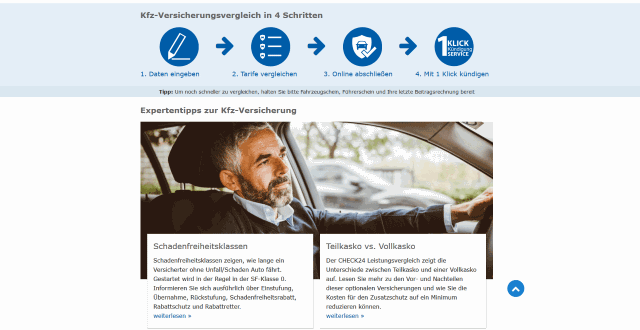Drive Smart: Save on Your Car Insurance Easily and Safely
Car insurance is more than a legal requirement — it’s essential protection for every driver. With evolving markets, many drivers today look for ways to balance cost and coverage without compromising safety. Comparing car insurance options online helps you understand what each plan offers and how it fits your needs. Modern insurance platforms let you view offers, customize coverage, and manage policies digitally. From basic liability to comprehensive protection, drivers can choose plans that match their habits and vehicles. Before selecting, review accident coverage, repair support, and roadside assistance. Many companies now offer flexible policy management tools that simplify the process. Whether you’re an experienced driver or just starting out, comparing providers ensures smarter, more confident decisions. Digital systems also make insurance more efficient — with instant verification, online claims, and secure management. By staying informed and comparing reliable options.

Car insurance is a necessary expense for drivers, but it doesn’t have to drain your bank account. By understanding how insurance companies calculate risk and premiums, you can make informed decisions that lead to substantial savings. From comparing quotes to leveraging available discounts and maintaining a clean driving record, there are numerous strategies to reduce your car insurance costs while ensuring you have adequate protection for whatever the road may bring.
How to Compare Car Insurance Quotes Effectively
Comparing car insurance quotes is one of the most direct ways to save money, but doing it effectively requires strategy. Start by gathering quotes from at least three different insurers using the same coverage levels for each. Online comparison tools make this process easier than ever, allowing you to input your information once and receive multiple quotes. When comparing, look beyond the premium price to examine deductibles, coverage limits, and exclusions that might affect the true value of the policy.
Remember that the lowest quote isn’t always the best deal. Consider the financial stability and customer service reputation of the insurance company. Organizations like J.D. Power and AM Best provide ratings that can help you evaluate an insurer’s reliability and customer satisfaction record. Taking the time to thoroughly compare not just prices but overall value can lead to better coverage at lower rates.
Finding Cheap Car Insurance Without Sacrificing Coverage
The quest for affordable auto insurance shouldn’t mean compromising on essential protection. Start by understanding which coverages are mandatory in your state and which are optional. While liability coverage is typically required, you might have flexibility with comprehensive and collision coverage, especially for older vehicles. Consider raising your deductibles to lower premiums, but only if you have savings to cover the higher out-of-pocket costs if you need to file a claim.
Many insurers offer significant discounts that can make quality coverage more affordable. These may include multi-policy discounts for bundling home and auto insurance, good student discounts, professional organization memberships, or discounts for safety features in your vehicle. Some companies even offer usage-based insurance programs that track your driving habits and reward safe behaviors with lower rates, providing a path to cheaper insurance based on your actual driving performance rather than demographic factors.
Understanding Auto Insurance Coverage Types and Limits
Knowing the different types of auto insurance coverage is crucial for making informed decisions about your policy. Liability insurance covers damages you cause to others and is typically expressed as three numbers (e.g., 100/300/50), representing thousands of dollars of coverage for bodily injury per person, bodily injury per accident, and property damage. Comprehensive coverage pays for damage to your vehicle from non-collision incidents like theft or natural disasters, while collision coverage handles damage from accidents regardless of fault.
Beyond these standard coverages, consider whether additional protections like uninsured/underinsured motorist coverage, medical payments, or personal injury protection make sense for your situation. Gap insurance can be valuable if you’re financing or leasing a vehicle, covering the difference between what you owe and what your car is worth if it’s totaled. By understanding these coverage types and setting appropriate limits based on your assets and risk tolerance, you can create a policy that provides necessary protection without paying for coverages you don’t need.
How the Best Car Insurance Companies Determine Your Rates
Insurance companies use complex algorithms to calculate premiums, weighing numerous factors to assess risk. Your driving history significantly impacts rates, with accidents and violations typically leading to higher premiums. Vehicle characteristics matter too—expensive cars cost more to insure because repairs and replacements cost more. Your location affects rates based on local accident statistics, theft rates, and even weather patterns that might increase claim likelihood.
Personal factors also influence premiums. Age and experience correlate strongly with accident risk, which is why younger drivers often pay more. Credit scores are used in most states as insurers have found correlations between credit management and claim filing behavior. Even your occupation and education may factor into rates, as some companies have data suggesting certain professions have lower claim frequencies. Understanding these rating factors helps you recognize which elements of your profile might be increasing your rates and where you might be able to make changes to reduce costs.
Getting Car Insurance Online: Convenience and Savings
The digital revolution has transformed the car insurance marketplace, making it easier than ever to research, compare, and purchase policies online. Most major insurers offer robust online platforms where you can get quotes, customize coverage, and complete the purchase process entirely digitally. This convenience eliminates the need for in-person meetings and allows you to shop for insurance on your own schedule.
Beyond convenience, online insurance shopping often leads to cost savings. Many insurers offer special discounts for customers who get quotes or purchase policies online, as these transactions reduce the company’s operational costs. Digital tools also make it easier to compare multiple quotes simultaneously, increasing your chances of finding the most competitive rate. Additionally, online account management features let you make policy changes, file claims, and access proof of insurance instantly, streamlining the entire insurance experience.
Car Insurance Provider Comparison and Cost Estimates
| Insurance Provider | Average Annual Premium | Notable Discounts | Customer Satisfaction Rating |
|---|---|---|---|
| Geico | $1,297 | Multi-policy, Good student, Military | 4.0/5 |
| Progressive | $1,419 | Snapshot program, Multi-car, Homeowner | 3.9/5 |
| State Farm | $1,457 | Drive Safe & Save, Steer Clear, Good student | 4.1/5 |
| Allstate | $1,834 | Drivewise, Early signing, Responsible payer | 3.8/5 |
| USAA (Military) | $1,209 | Military-specific, Legacy, Vehicle storage | 4.3/5 |
Prices, rates, or cost estimates mentioned in this article are based on the latest available information but may change over time. Independent research is advised before making financial decisions.
Safe Driving Habits That Can Lower Your Premium
Your driving behavior directly impacts your insurance costs, making safe driving one of the most effective ways to save money long-term. Avoiding accidents and traffic violations keeps your record clean, preventing surcharges that can increase premiums by 20-50% or more. Many insurers now offer telematics programs that monitor driving habits through mobile apps or plug-in devices, rewarding safe behaviors like gentle braking, moderate acceleration, and driving during lower-risk hours with discounts of up to 30%.
Beyond immediate premium impacts, defensive driving courses can provide multiple benefits. Many insurers offer discounts to drivers who complete approved courses, and the skills learned help prevent accidents that would otherwise lead to rate increases. Some states even allow traffic violations to be dismissed by taking defensive driving classes, keeping your record clean. By consistently practicing safe driving habits and taking advantage of related discount programs, you create a positive cycle of lower risk and reduced insurance costs.
In conclusion, saving on car insurance requires a multi-faceted approach that combines smart shopping, appropriate coverage selection, and safe driving practices. By comparing quotes regularly, understanding how rates are calculated, taking advantage of available discounts, and maintaining a clean driving record, you can achieve significant savings without compromising protection. Remember that insurance needs change over time, so reviewing your coverage annually ensures you’re always getting the best value for your specific situation. With these strategies, you can drive with confidence knowing you’re well-protected at a price that fits your budget.




